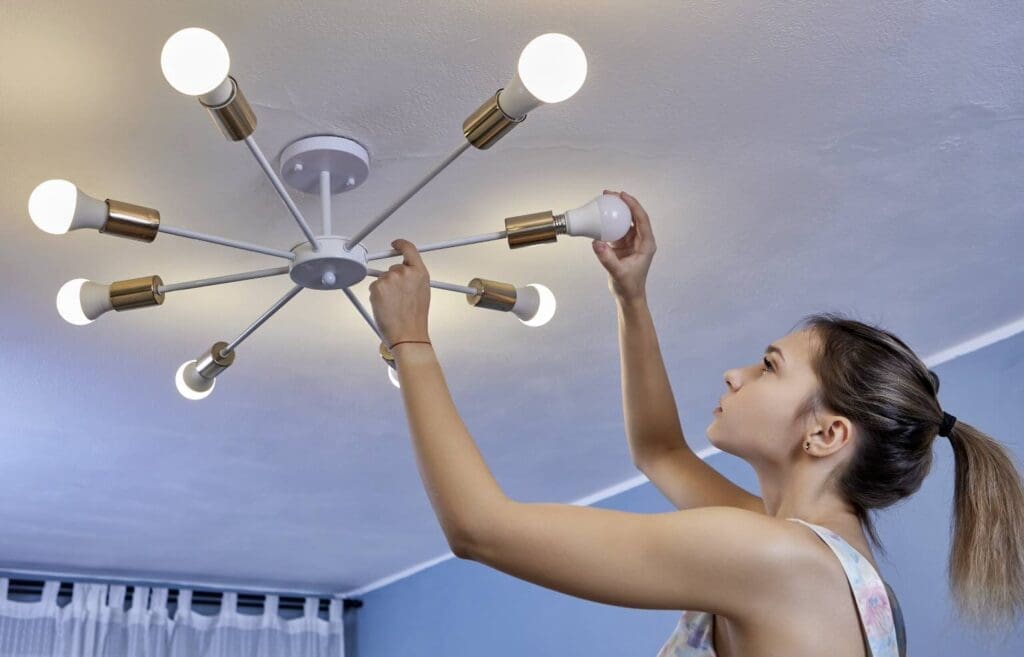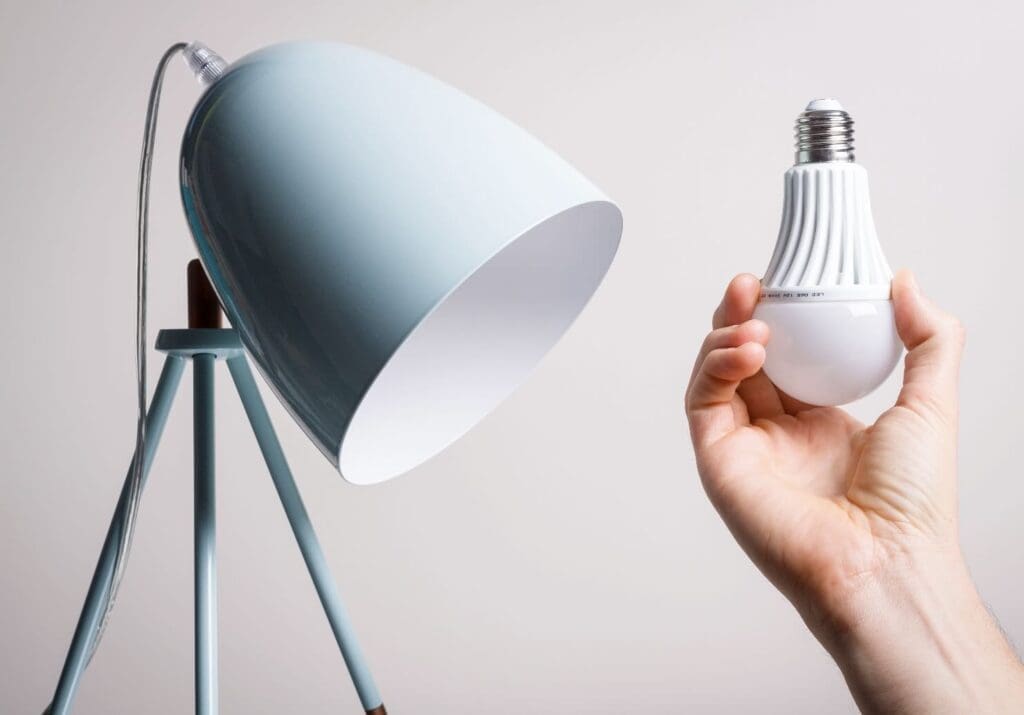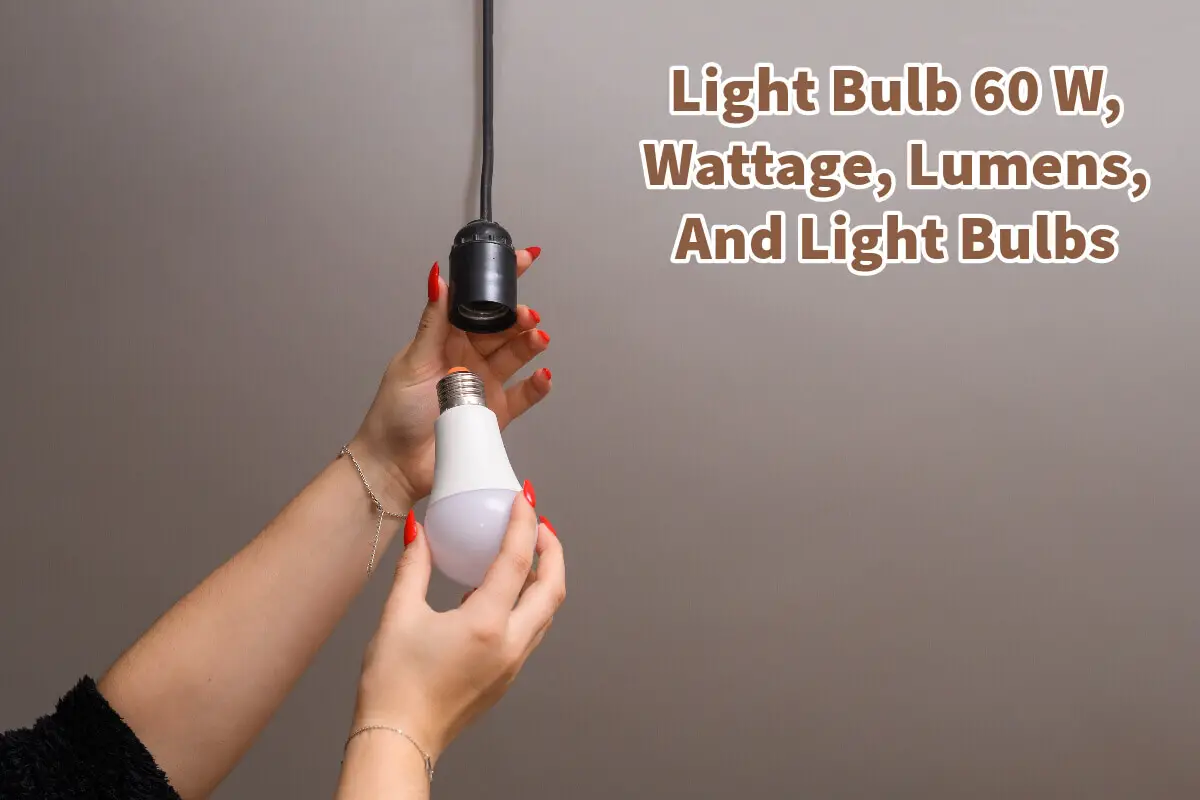Light bulbs have illuminated our spaces for over a hundred years, shining light on our homes, streets, and offices.
Yet, as technology advances, so does the humble light bulb. Today, when you venture into a store or browse online, you’re presented with a plethora of options that can be daunting. Read on as we will shine a spotlight on the 60W light bulb and why today an LED bulb is the choice while at the same time guiding you through the essential details to consider when making your selection.
Table of Contents
- Understanding The 60W Light Bulb And The Intricacies Of Modern Lighting
- Related Content
Understanding The 60W Light Bulb And The Intricacies Of Modern Lighting
Light bulbs have been around for over a century, brightening our homes, streets, and workplaces. But as technology has progressed, the simple light bulb has evolved too.

Now, when you walk into a store or shop online, you’re met with various choices that might seem overwhelming. We will dive deep into the world of the 60W light bulb and unravel the various aspects you need to know when choosing.
1. Power Rating: Efficiency In The Modern Era
Traditionally, when we referred to a 60W bulb, it was mostly the incandescent type. The ’60W’ indicated the power it consumed.
However, in the age of LED bulbs, a 60W-equivalent doesn’t consume 60 watts. Why? Because LED technology is vastly more energy-efficient. But even though most people have changed over to LED-type bulbs, light bulbs are still mentioned by wattage.
LED bulbs can deliver the same brightness (or lumens, but we’ll get to that in a bit) as an incandescent bulb while consuming significantly less power. So, a bulb that provides the same light as an old 60W incandescent might only use between 8 to 12 watts if it’s an LED.
This efficiency is not only excellent for your electricity bill but also for the environment. That is why they are changing the light bulbs from Edison’s Incandescent bulbs LED lightbulbs today. LED light bulbs are far more effective than incandescent bulbs.
2. Color Temperature: From Warm Ambiance To Cool Clarity
The color of the light emitted by a bulb is measured in Kelvins (K) (more about Kelvins below). Contrary to what one might assume, a lower Kelvin number indicates a warmer, yellowish light reminiscent of the glow from an old incandescent or sunset.
On the other hand, a higher Kelvin number represents a cooler, bluish light, often associated with a midday sky or an overcast environment.
Your choice should be based on the mood and functionality you desire for the room.
Decoding Kelvins (K): Understanding Light Bulb Color Temperatures
When we think of light bulbs, brightness is typically the first attribute that comes to mind. However, the color of the light is equally crucial in shaping the ambiance of a space.
This color temperature is measured in units called Kelvins (K). But what exactly does this mean, and how does it impact our choice of lighting? Let’s delve into the world of Kelvin’s to shed some light on the subject.
1. What Are Kelvins?
Kelvin is a unit of measurement for temperature, just like Celsius or Fahrenheit. However, in the context of light bulbs,
Kelvin measures the color temperature, not the heat output of the bulb. Precisely, it gauges the hue of the light emitted by the bulb when it’s powered on.
2. How Does Kelvin Relate to Color Temperature?
The Kelvin scale for light bulbs typically ranges from 1,000 to 10,000. Contrary to intuitive thinking, lower Kelvin values produce a warmer, more yellow, or amber light, while higher Kelvin values yield a cooler, bluish light.
Here’s a general breakdown:
- 1,000 – 3,000K: These produce warm or soft white light. This range is close to the glow from a candlelight or just after sunset. It’s calming cozy, and is commonly used in living rooms, dining areas, and bedrooms.
- 3,100 – 4,500K: This range offers a neutral or bright white light. The light is clear and crisp, making it suitable for kitchens, bathrooms, offices, and retail spaces.
- 4,600 – 6,500K: Emitting a cool, daylight-like glow, bulbs in this range are excellent for reading or intricate tasks. They’re often found in garages, workspaces, and some office environments.
- Above 6,500K: This is an excellent, bluish-white light akin to a clear blue sky. It’s less common for home use but can be found in commercial and industrial applications.
3. Why Is Color Temperature Important?
The color temperature of a bulb can significantly impact our mood, perception, and the overall ambiance of a space. For instance:
- Warm colors (lower Kelvins) relax and make spaces feel intimate and cozy.
- Neutral colors are bright without being overwhelming and are versatile for various settings.
- Cool colors (higher Kelvins) can be invigorating, increase alertness, and are ideal for tasks requiring attention to detail.
Understanding Kelvin helps choose the right light for the desired mood and function. For instance, a bedroom might benefit from a warmer glow for relaxation, while a home office might need a neutral to cool light for productivity.
Kelvins offer a way to quantify the color temperature of light, providing consumers with a consistent measure to select the perfect hue for their needs.
Whether you’re looking to create a serene sanctuary, a productive workspace, or anything in between, understanding the Kelvin scale ensures you can set the perfect tone with your lighting choices.

3. Smart Features: The Future Is Bright (And Colorful!)
Gone are the days when a light bulb’s only job was illuminating. Today’s smart LED bulbs are not just about lighting up a space but about personalizing it.
These bulbs can be controlled using smartphone apps, voice-controlled assistants, or smart home systems.
Key features of intelligent bulbs include:
- Dimmability: Adjust the brightness to your liking without needing a dimmer switch.
- Color Changing: Many smart bulbs can emit various colors, not just white. Want a soothing blue? A passionate red? You got it.
- Scheduling: Set them to turn on or off at specific times. Perfect for simulating presence when you’re on vacation.

4. Lamp Wattage Vs. Lumens: The Real Measure Of Brightness
Often, people think the wattage (like ’60W’) indicates how bright a bulb is. However, wattage merely measures how much energy a bulb uses.
On the other hand, Lumens measures the actual brightness a bulb provides.
For example, two different 60W bulbs (incandescent and one LED) will consume 60 watts of power. Still, the LED will typically provide more lumens – meaning it’s brighter while using the same amount of energy.
Looking at lumens is more beneficial when shopping, especially for LED bulbs. For reference:
- 450 lumens: About equivalent to a traditional 40W bulb.
- 800 lumens: Roughly the brightness of a classic 60W incandescent.
- 1600 lumens: Comparable to the old 100W bulbs.
Always check the lumens alongside the wattage to ensure you’re getting the desired brightness.
Choosing the perfect light bulb is no longer as simple as grabbing one off the shelf. But with this newfound complexity comes a world of customization and efficiency that previous generations could only dream of.
Whether you’re looking for a particular color temperature, smart features, or a super-efficient bulb, understanding these basics will light the way to the best choice.
Remember: it’s not just about lighting a room; it’s about creating an environment. And in the modern era, you have more control over that environment than ever.
If you want to see how Mondoro can help you with your Ul Certified lamp needs, we would love to talk to you about how we can help you.
Find out more about how Mondoro can help you create, develop, and manufacture excellent home decor and furniture products – don’t hesitate to contact me, Anita. Check out my email by clicking here or become a part of our community and join our newsletter by clicking here.
Mondoro gives out a FREE Lookbook to anyone interested. You can receive a copy of our latest Lookbook by clicking here.
Listen to our Podcast called Global Trade Gal. You can find it on all major podcast platforms. Try out listening to one of our podcasts by clicking here.
Subscribe to our Mondoro Company Limited YouTube Channel with great videos and information by clicking here.
Related Content
The Intricate Global Supply Chain: Your Local Grocery Store
The abundance and variety of products that line the shelves are tangible evidence of the vast reach and significance of the global supply chain. By diving deep into the functioning of our local grocery store, we can better appreciate the broader implications and workings of this intricate system.
You can discover more by reading The Intricate Global Supply Chain: Your Local Grocery Store by clicking here.
5 Materials For Basket Weaving Explored
At Mondoro, we pay homage to this ancient tradition by employing five fundamental materials for our basket weaving: bamboo, rattan, seagrass, water hyacinth, and faux rattan. Each of these materials brings unique characteristics to the table, infusing our baskets with versatility and charm.
You can learn more by reading 5 Materials For Basket Weaving Explored by clicking here.
How To Bend And Shape Rattan
Rattan can be bent and shaped in a variety of ways. The rattan must first be pliable so that it can be bent. Several methods are used to accomplish this. Once the rattan is pliable, it can be shaped in various ways.
By clicking here, you can learn more by reading our blog How To Bend And Shape Rattan by clicking here.


